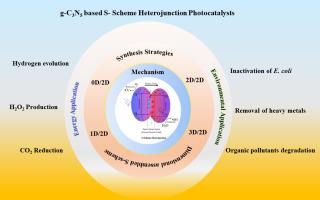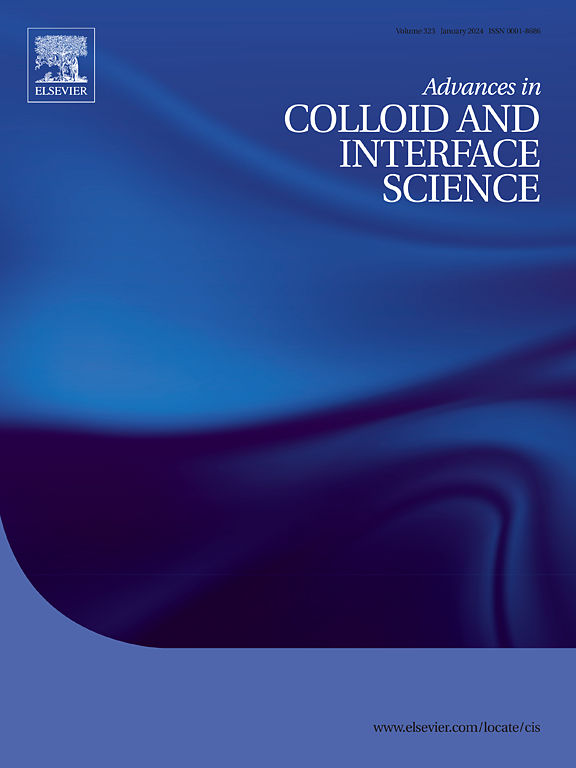Recent advances in g-C3N5-based S-scheme heterojunction photocatalysts: From design to application
IF 19.3
1区 化学
Q1 CHEMISTRY, PHYSICAL
引用次数: 0
Abstract
Graphitic carbon nitride g-C3N5 is a subject of significant research interest as an advanced photocatalyst, largely attributed to its distinctive electronic structure and nitrogen-rich, extended π-conjugated framework. Compared to traditional g-C3N4, it offers a narrower bandgap, enhanced charge carrier mobility, and stronger redox potential, making it highly suitable for solar-driven applications such as green energy production, effluent remediation and synthesis of commercially viable chemicals. However, its performance is limited by rapid e−/h+ pair recombination. To overcome this, the construction of S-scheme heterojunctions has emerged as a promising strategy, as it enables efficient charge separation while retaining strong redox capabilities and advantages that conventional Type-I and Type-II heterojunctions lack. The built-in electric field and band bending are inherent to S-scheme heterojunctions, that further enhances charge migration and utilization of absorbed solar energy. Despite these benefits, detailed studies on g-C3N5-based S-scheme systems remain sparse. Therefore, this review critically examines the charge transfer mechanisms in g-C3N5 S-scheme systems and highlights their enhanced performance relative to conventional heterostructures. Furthermore, the review provides an in-depth discussion on various synthesis strategies via dimensional assembled S-scheme for g-C3N5-based heterojunctions and evaluates advanced characterization techniques used to probe charge migration behavior. Finally, the study explores the photocatalytic mechanisms of these heterojunctions for green hydrogen evolution, pollutant degradation, CO2 reduction, and H2O2 synthesis. Collectively, this review offers a comprehensive analysis of g-C3N5-based S-scheme heterojunction photocatalysts and outlines key directions for advancing their development to meet future sustainability challenges.

g- c3n5基s型异质结光催化剂的研究进展:从设计到应用。
石墨化氮化碳g-C3N5作为一种先进的光催化剂,由于其独特的电子结构和富氮的扩展π共轭框架而备受关注。与传统的g-C3N4相比,它具有更窄的带隙,增强的电荷载流子迁移率和更强的氧化还原电位,使其非常适合太阳能驱动的应用,如绿色能源生产,废水修复和商业上可行的化学品合成。但其性能受到e-/h+对快速复合的限制。为了克服这一问题,构建S-scheme异质结已经成为一种很有前途的策略,因为它可以实现有效的电荷分离,同时保留传统的i型和ii型异质结所缺乏的强氧化还原能力和优势。内置电场和带弯曲是s型异质结所固有的,这进一步增强了电荷迁移和吸收太阳能的利用。尽管有这些好处,但对基于g- c3n5的S-scheme系统的详细研究仍然很少。因此,本文对g-C3N5 S-scheme体系中的电荷转移机制进行了批判性的研究,并强调了它们相对于传统异质结构的性能增强。此外,本文还深入讨论了基于g- c3n5异质结的尺寸组装s方案的各种合成策略,并评估了用于探测电荷迁移行为的先进表征技术。最后,研究探讨了这些异质结在绿色析氢、污染物降解、CO2还原和H2O2合成等方面的光催化机制。综上所述,本文对基于g- c3n5的s -图式异质结光催化剂进行了全面的分析,并概述了推进其发展以应对未来可持续性挑战的关键方向。
本文章由计算机程序翻译,如有差异,请以英文原文为准。
求助全文
约1分钟内获得全文
求助全文
来源期刊
CiteScore
28.50
自引率
2.60%
发文量
175
审稿时长
31 days
期刊介绍:
"Advances in Colloid and Interface Science" is an international journal that focuses on experimental and theoretical developments in interfacial and colloidal phenomena. The journal covers a wide range of disciplines including biology, chemistry, physics, and technology.
The journal accepts review articles on any topic within the scope of colloid and interface science. These articles should provide an in-depth analysis of the subject matter, offering a critical review of the current state of the field. The author's informed opinion on the topic should also be included. The manuscript should compare and contrast ideas found in the reviewed literature and address the limitations of these ideas.
Typically, the articles published in this journal are written by recognized experts in the field.

 求助内容:
求助内容: 应助结果提醒方式:
应助结果提醒方式:


